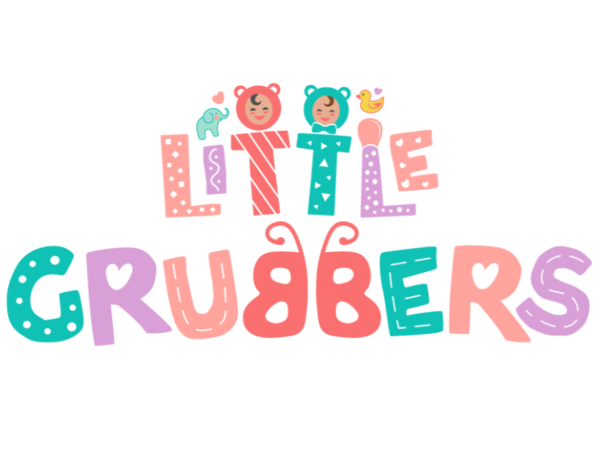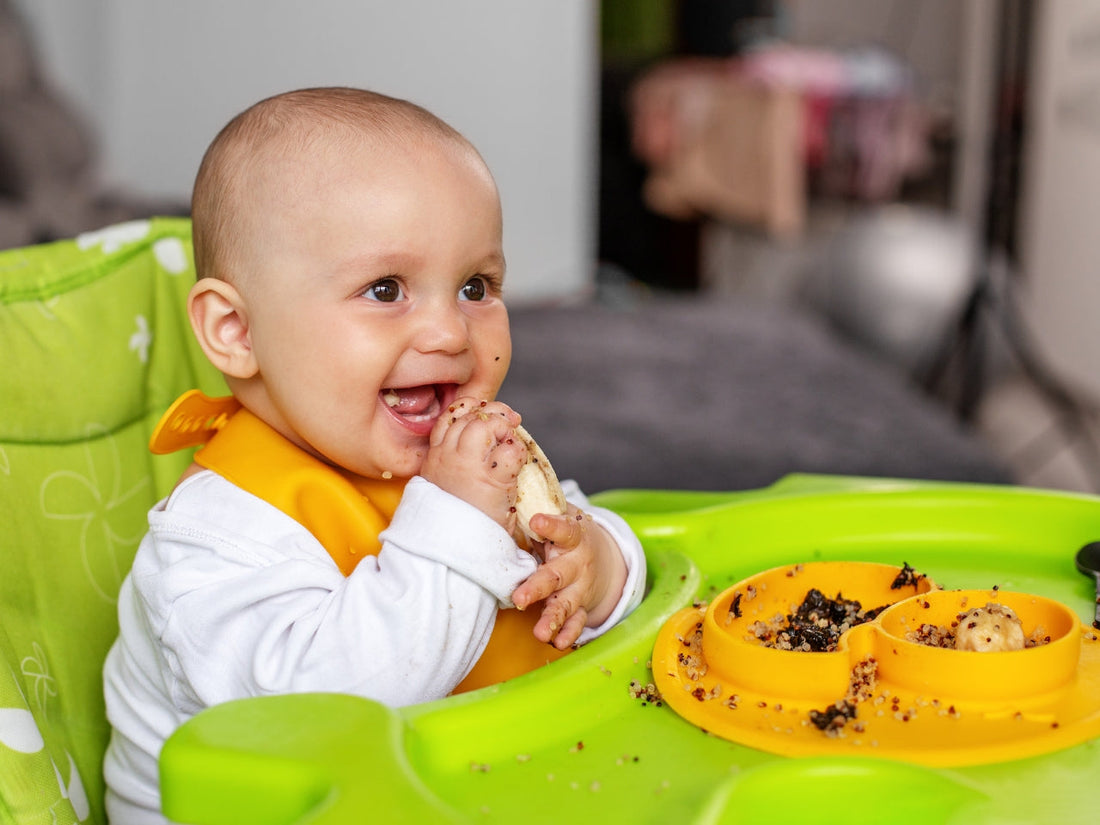Ready, Set, Solids!
Starting solids is an exciting milestone for both you and your baby. It’s a sign that your little one is growing up and ready to explore new tastes and textures. But with all the advice and opinions out there, introducing solid foods can also feel a bit overwhelming.
The good news? You don’t have to go it alone. In this 3-phase guide to starting solids, I’ll break down when and how to introduce new foods, offer practical tips, and share how tools like the Little Grubbers 3-in-1 Baby Spoon™ can make this transition smoother for both of you.
Phase 1: Getting Ready for Solids (Around 4-6 Months)
Before you dive into mashed bananas and sweet potato puree, it’s important to make sure your baby is truly ready for solids.
Signs Your Baby Is Ready
- Good Head Control: Your baby can sit up with support and hold their head steady.
- Interest in Food: They watch you eat, reach for food, or open their mouth when food comes their way.
- Loss of Tongue-Thrust Reflex: Your baby no longer automatically pushes food out of their mouth with their tongue.
First Foods to Try
Start with single-ingredient, iron-rich foods:
- Cereals: Fortified baby cereal mixed with breast milk or formula.
- Vegetables: Sweet potatoes, carrots, or squash.
- Fruits: Pureed apples, pears, or bananas.
💡 Tip: Use a soft, silicone spoon like the Little Grubbers 3-in-1 Baby Spoon™ to make those first bites gentle on your baby’s gums. Its ergonomic design also helps little hands practice self-feeding when they’re ready!
Phase 2: Exploring New Tastes and Textures (6-9 Months)
Once your baby is comfortable with purees, it’s time to introduce more variety and texture.
Adding More Variety
- Introduce Protein: Pureed meats, beans, and yogurt.
- Offer a Rainbow of Veggies: Each color provides different nutrients.
- Experiment with Grains: Quinoa, oatmeal, or whole-grain pasta.
Transitioning to Thicker Textures
- Move Beyond Purees: Mash foods with a fork or offer small, soft pieces of food.
- Encourage Self-Feeding: Place small bits of food on the tray or use a pre-loaded spoon.
The Little Grubbers 3-in-1 Baby Spoon™ is perfect for this phase. Its unique design allows you to pre-load purees, and its easy-to-hold handle helps babies practice independence safely.

Phase 3: Building Healthy Habits (9-12 Months and Beyond)
As your baby approaches their first birthday, they can eat more of what the family is eating—with some modifications.
Introduce Finger Foods
- Soft Fruits: Berries, soft pear slices, or peach cubes.
- Steamed Vegetables: Carrot sticks, green beans, or broccoli florets.
- Protein-Rich Foods: Shredded chicken, scrambled eggs, or beans.
Encourage Family Meals
- Eat Together: Babies learn by watching you, so enjoy meals as a family.
- Offer Balanced Meals: Include protein, veggies, grains, and healthy fats.
The Little Grubbers 3-in-1 Baby Spoon™ continues to be helpful at this stage, supporting self-feeding skills while reducing mess with its spill-resistant design.
Tips for a Smooth Transition to Solids
1. Go Slow with New Foods
Introduce new foods one at a time and wait 3-5 days before trying another to monitor for allergies.
2. Be Patient with Rejection
Babies may need to try a food multiple times before they accept it. Keep offering a variety of foods without pressure.
3. Create a Positive Mealtime Environment
- Make It Fun: Sing songs or play soft music.
- Stay Relaxed: Babies can sense stress, which can make them more likely to refuse food.
4. Use Safe Feeding Tools
Opt for products made with non-toxic, BPA-free materials. The Little Grubbers 3-in-1 Baby Spoon™ is not only safe but also promotes sensory exploration and fine motor skills.
Common Questions About Starting Solids
How Much Should My Baby Eat?
In the beginning, a few spoonfuls are plenty. As your baby grows, they’ll naturally eat more. Follow their cues—if they turn away or push food away, it’s okay to stop.
Can I Offer Water?
Once your baby starts solids, small sips of water with meals are okay. Avoid juice and sugary drinks.
Should I Season My Baby’s Food?
Avoid salt and sugar, but don’t be afraid to introduce mild herbs and spices to develop their palate.
Conclusion: Make Starting Solids a Joyful Journey
Starting solids is a big step, but with the right approach and tools, it can be a wonderful experience for you and your baby. Take it one phase at a time, celebrate small wins, and enjoy the messy (and sometimes hilarious) moments along the way.
🍽️ Ready to simplify your baby's feeding journey? Check out the Little Grubbers 3-in-1 Baby Spoon™, designed to make starting solids safe, easy, and fun for your little one!
👉 [Shop Now] to turn every mealtime into a milestone.
We’d Love to Hear from You!
Have you started solids with your baby yet? Share your experiences and favorite first foods in the comments below. Your story might inspire another mom on this exciting journey!

